Beyond the Riviera in the Alpes-Maritimes
The crowded coastline of the far southeastern corner of France continues to attract summer and winter visitors, but there is much more to be discovered in the immediate hinterland, beyond the Côte d’Azur itself. Jennifer Ladonne reveals some of the area’s hidden delights
Of the five départements that make up France’s Provence region, there is none more spectacular, or spectacularly diverse, than the Alpes-Maritimes. With a third of its border touching Italy and another third the Riviera coastline (called the Côte d’Azur in France), this southeastern parcel contains some of the loveliest and most accessible mountain landscapes in the country, pristine natural parks, charming perched villages, sprawling beaches and an unparalleled artistic legacy. A region of striking contrasts, you can drive from the glittering shores of Menton to the snow-tipped Alps in an hour. Or hop on a ferry in Cannes and in 15 minutes disembark on a jewel of an island whose entire population consists of 21 Cistercian monks and a few thousand grapevines.
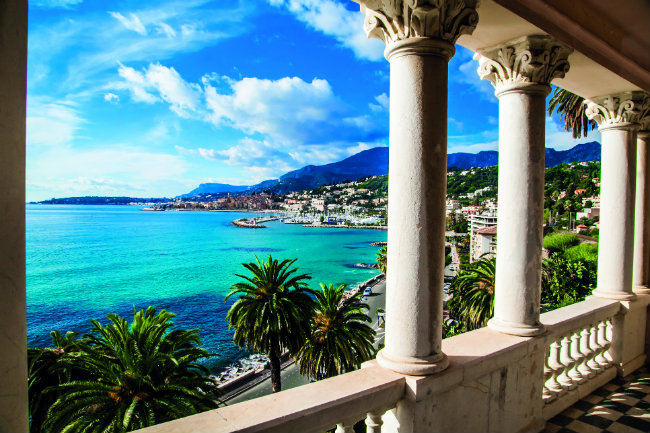
Corinthian columns on a terrace at Menton. Photo: OT Menton
The off-season, when the sun-worshippers have gone and the coastal towns empty out, is a romantic time to stroll along the Côte d’Azur’s long, rocky beaches, explore the meandering cobbled streets of impossibly scenic villages (dozens of which few tourists have even heard of), and wander through half-deserted museums.
An art lover’s paradise, this was the stomping ground of some of the 20th century’s great masters – Matisse, Picasso, Chagall, Bonnard, Léger, Le Corbusier and the like – who loved the limpid light and flocked to Nice, Antibes, Mougins, and Saint-Paul-de-Vence to escape the implacable grey of Paris. Not to mention writers and filmmakers, who could live the glamorous life on the coast and retreat to the hinterlands for peace.
More intrepid connoisseurs can take France’s most scenic train ride from Nice to La Brigue, a perched village high in the mountains where a brisk hike brings you to the chapel of Notre-Dame des Fontaines, which harbours exquisite 600-year-old frescoes.

Les rampes Saint-Michel. Photo: Drone de Regard
ARTISTS AND OLD TOWNS
If you’re among those for whom the word Riviera conjures up yachts, perma-tans and bling, it’s time to reconsider. Behind the crowded summer promenades and depressingly overbuilt coastline around the Alpes-Maritimes’ major cities nestle historic old towns well worth taking the time to explore.
It may seem counter-intuitive to visit Nice in winter, but it’s an ideal season to really have the place to yourself to explore a charming old town and the city’s many museums, sans crowds. In the old town itself, you can begin at the market in the morning – though not too early, in the off-season it gets rolling at around 9-9.30am – then walk up picturesque stone steps (or take the elevator) to the Colline du Château (Castle Hill), now a leafy park culminating in 360-degree views of the coastline, city and mountains beyond.
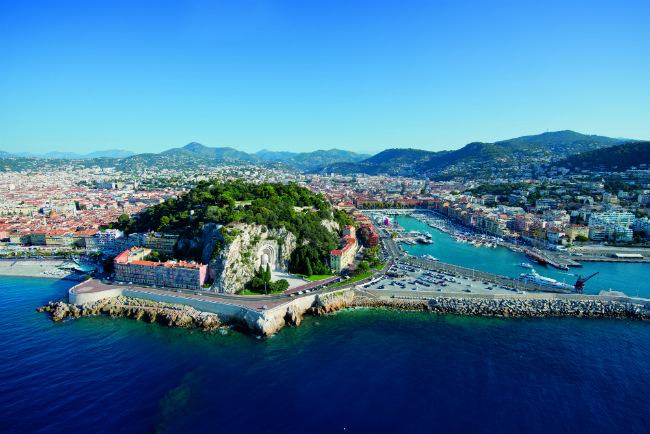
View over the port of Nice. Photo: A. ISSOCK/ OTC NICE
By 11am the shops are open and you can wander the old town’s meandering streets, step into the 17th-century cathedral, peruse the boutiques, then tuck into an authentic Niçois lunch at A Buteghinna. The new Coulée Verte park allows visitors to traverse the old town quickly and easily on foot.
After lunch, you might check out the Musée de la Photographie Charles Nègre, featuring world-class photography exhibitions, many of which were shown in Paris or other well-known collections; or MAMAC, Nice’s museum of contemporary art, which focuses on French modern and contemporary works and has permanent collections by notable American and European artists. Antique lovers should see Nice’s superb antiques district, which stretches from the place Garibaldi all the way to the port.

Contemporary art in the region. Photo: A.Issock/ OTCN
Another excursion takes you up to the Cimiez neighbourhood, home of the Musée Chagall, the Musée Matisse (he lived for a time at the Regina Palace hotel, Queen Victoria’s winter lodgings) and the Musée d’Archéologie. The last two are within steps of each other in a park that also contains the Arènes de Cimiez.
A bit farther afield, near the airport (but easily reached by bus, or even on foot, along the Promenade des Anglais), lies one of Nice’s lesser-known treasures, the Musée des Arts Asiatiques, an absolute gem of a collection housed in a splendid contemporary building by the Japanese architect Kenzo Tange.
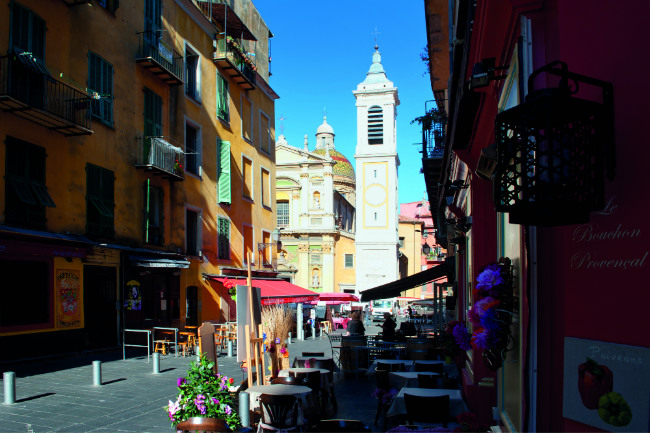
The charms of Vieux Nice. Photo: Issock/ OTCN
A scenic 30-minute drive (or train or bus ride) along the coast from Nice takes you to Menton – called ‘the Pearl of France’ for its beautiful beaches and gardens – bordering Italy at the French Riviera’s farthest reaches. Menton is famous for its temperate winters, and for its lemons, which are used to make the refreshing liqueur and marmalade, among other citrussy delights, that can be found in the boutiques lining the city’s old town. In February, at the height of lemon season, the Fête du Citron is a wildly popular carnival featuring lofty citrus-based sculptures and colourful parades.

The Basilique Saint-Michel-Archange at Menton. Photo: Drone de Regard
FEAT OF ARCHITECTURE
An excellent survey of the work of artist and filmmaker Jean Cocteau, who summered in nearby Saint-Jean-Cap-Ferrat, is on view at Menton’s luminous Cocteau Museum, set on the beach just below the old town. The squat, trapezoidal building designed by Rudy Ricciotti is a tremendous feat of museum architecture. Ricciotti also designed the Louvre’s Islamic galleries and the marvellous MUCEM in Marseille. [Editor’s note: The museum is currently closed for renovation works following a flood.] Cocteau fans can also visit Menton’s Salle des Mariages at the Hôtel de Ville, an intimate tribute to love covered entirely in Cocteau’s dreamy, sweetly naughty frescoes.
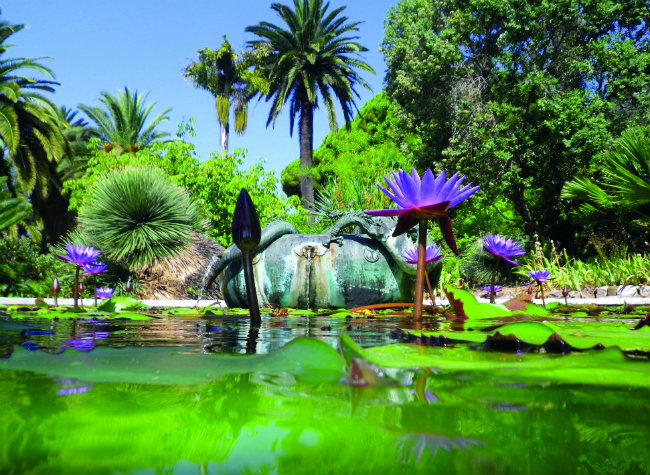
The Jardin Maria Serena in Menton
A breezy two-and-a-half-mile walk along Menton’s seaside Promenade du Soleil takes you to Cap Moderne, at Roquebrune-Cap-Martin, where the Irish architect and designer Eileen Gray built her modernist villa E-1027 and filled it with her now-iconic furniture. In 1938 Le Corbusier rented the house from Gray, and in a story of rivalry (or misogynistic jealousy, depending on who you ask) splashed its stark white walls with vivid murals, infuriating Gray. Le Corbusier ended up building his more rustic Cabanon just down the road, and the two structures, both recently restored (and both still bearing Le Corbusier’s murals), make an engaging afternoon visit. If you’re not up for walking, you can quickly reach Cap Moderne from Menton via train or bus.

Antibes, with the mountains rising beyond. Photo: Claude Piot
Equidistant from Nice on the western side, Antibes Juan-les-Pins has its own stories to tell. This is where Picasso, fleeing domestic turmoil in Paris, came to visit his friend Matisse and, lacking the space to paint, was offered the attic rooms of the 14th-century Château Grimaldi, which was then an archaeological museum. The artist was able to rejoin his mistress, Françoise Gilot, who would soon bear him a child, and regain his inspiration and his spirits. His beautiful monochrome murals painted directly on the château walls, now the Musée Picasso, are still to be seen, along with a collection of expansive, joyful works that he drew and painted here, testimonies to the happy effects of the coast and domestic peace. Picasso had a significant presence in the area – notably in nearby Vallauris, where he made his first ceramic works, the site of another Picasso museum and chapel – for the rest of his life, and spent his last 12 years in Mougins, a few miles away.
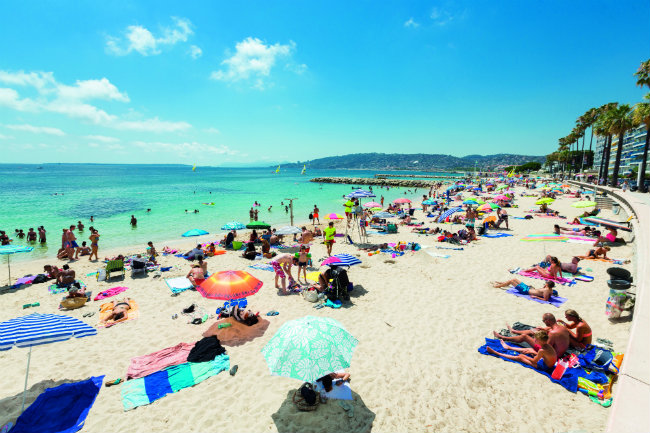
The beach at Juan-les-Pins. Photo: Gilles Lefrancq
Antibes’s seaside ramparts, dating back to the 10th century and later fortified by Louis XIV’s military architect Vauban, and old town are charming to explore. Do stop in at Lilian Bonnefoi, where you can watch the chocolates and pastries being made, or bring one along with you to La Torref de Fersen, the best coffee around, helmed by an ex-Parisian barista who roasts his own beans on the premises. Even if you don’t stay overnight, stop for a drink at the Hôtel Belles Rives, a beautifully restored Art Deco gem, where Zelda and F. Scott Fitzgerald lived and partied. Fitzgerald wrote Tender is the Night here in room 25, and the bar and outdoor terrace, with its sweeping views of the sea, transport you to another time.
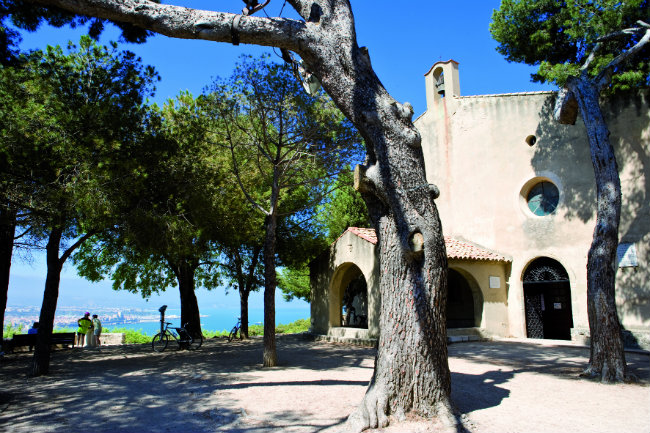
Église Notre- Dame de la Garoupe, Antibes. Photo: F. Trotobas/ ville d’Antibes
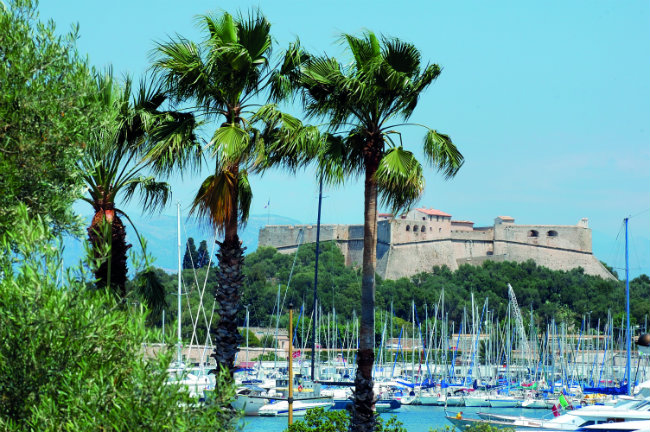
The fort in Antibes. Photo: D. Vincendeau
PERCHED VILLAGES
Apart from historic city centres, seaside promenades and cultural outposts, many of the cities and suburbs on the coastline are terribly overbuilt and lacklustre. Fortunately, this is a fact we can overlook for the wealth of wonders inland.
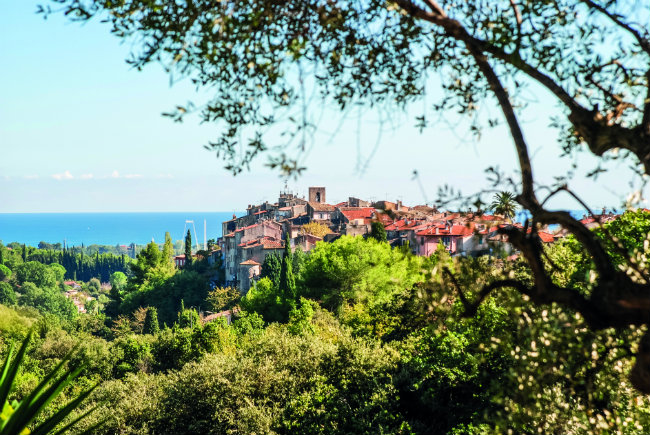
Village of Biot
The tiny medieval village of Biot was once a centre for ceramic jars (the area is rich in both clay and coloured pigments and there is a stellar museum relating the history), and is now a centre for hand-blown glass. You can watch this process at several of the glass-makers in and below the old town. Stop in at the Tourist Office at Biot’s entrance and pick up a map for a circuit around the cobbled streets and squares, and visit some of the artist’s ateliers and galleries showing jewellery, leather goods, ceramics, artworks and more. Biot also has a unique medieval church and a charming arcaded square.
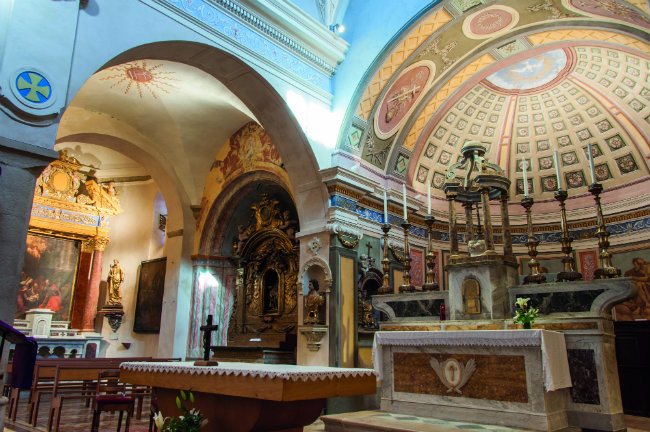
l’Église de Sainte-Marie-Madeleine at Biot
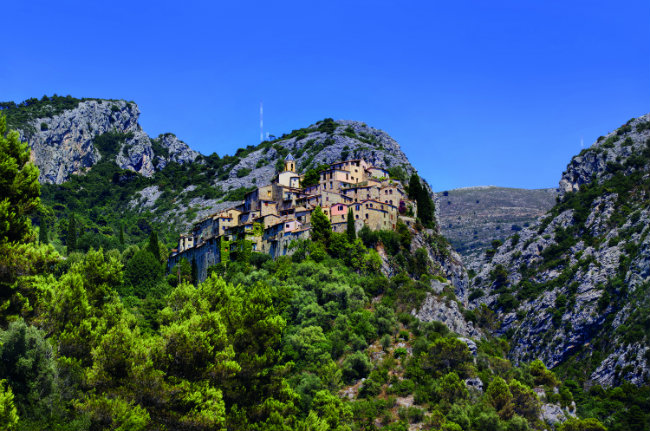
Peillon is just one of the Alpes- Maritimes’ many villages perchés, or ‘perched villages’. Photo: Shutterstock
Just outside Biot, the Musée Léger (the artist was another habitué of the area) features some of his monumental works, including tapestries and mosaics. If you’re tepid about Léger you won’t be after a visit here; but the vibrancy, balance and force of his larger paintings exhibited together in one room is truly compelling. Like Biot, nearby Mougins and the more famous Saint-Paul-de-Vence – the two most elegant of the region’s towns – are wall-to-wall with artists’ ateliers and galleries, and boast their own artsy history. Picasso spent the final 12 years of his life in Mougins, although you won’t see much about him except in the exceptional Musée d’Art Classique de Mougins (MACM), where surprising and utterly compelling juxtapositions between the impressive collection of Egyptian, Greek and Roman antiquities and modern masterpieces by the likes of Cézanne, Rodin and Picasso, and more contemporary works by Yves Klein, Andy Warhol and Damien Hirst make this compact museum a joy to visit. With its immersion in history and art history, it’s an excellent place for kids.

Fruit and vegetable market in Cannes
Storied Saint-Paul-de-Vence is probably best known in France as home of the Colombe d’Or hotel, once a tiny village café until it was discovered by the usual suspects – Matisse, Chagall, Picasso, the Fitzgeralds, Hemingway – and later the Belgian artist Jean-Michel Folon, whose chapel at the top of the town is not to be missed. Over the years, the hotel grew in size and stature, attracting aristocrats and movie stars. Guests stay and dine at this now-legendary luxury palace among original works by Picasso et al., forked over to pay the artists’ tabs.
The town’s medieval ramparts, cobbled streets and wall-to-wall boutiques and art galleries draw a crowd in summer, but in the off-season it’s a dream to explore. In the cemetery you’ll notice Marc Chagall’s grave marked with a circle of stones, the only Jewish monument. Art lovers will already know the Fondation Maeght, nestled in a garden setting with views to the sea in the hills above Saint-Paul-de-Vence. Of all the cultural centres in the region, this is a stand-out, not only for the collection – many of the artists in the permanent collection were personal friends of founders Marguerite and Aimé Maeght – but also for Josep Lluís Sert’s ground-breaking building and chapel, and majestic outdoor installations by Giacometti, Miró, Calder and others.
PRETTY OLD TOWN
Cannes is a place unto itself: glamorous and lively with its yachts, festivals, casinos, beach hotels and posh designer boutiques. But it also offers one of the Riviera’s best green markets and a pretty old town topped by the Musée de la Castre, whose medieval tower offers spectacular views of the coast and the famous turquoise waters surrounding the Îles de Lérins. The two inhabited islands, accessible via a 15-minute ferry ride from the old port, make for a perfect day trip.
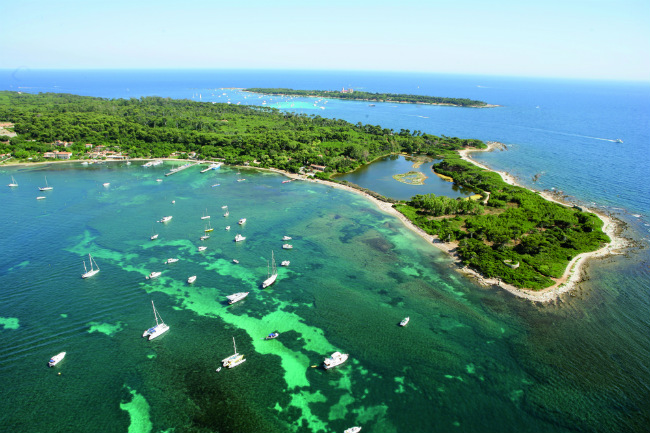
Pleasure craft arrive at the Île Sainte-Marguerite. Photo: KELAGOPIAN
The larger Île Sainte-Marguerite has wide trails, a lake with a bird-watching hide and seaside picnic and sunbathing areas, all under towering pines and eucalyptus. There’s also a historic museum in the Vauban fort (where the man in the iron mask was imprisoned) and two good restaurants.
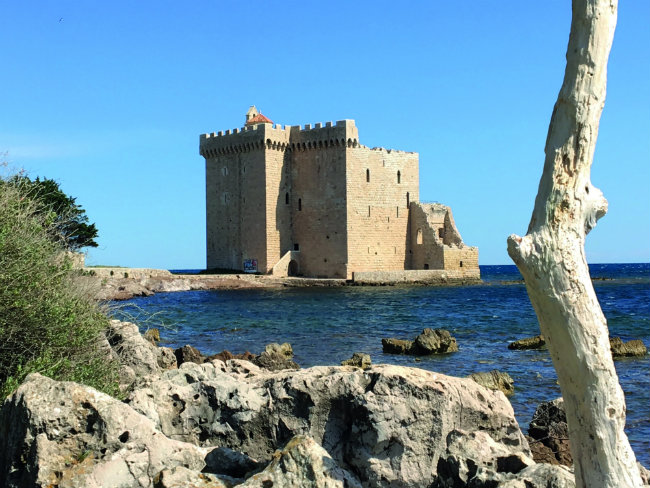
The fort on Île Saint- Honorat. Photo: Jennifer Ladonne
Pint-sized, vineyard-covered Île Saint-Honorat is home to some of France’s last winemaking monks, and you can taste and purchase these award-winning wines in a special dégustation room (there’s also a very good restaurant). To walk around the island on foot takes about an hour, or longer with stops in the old castle or the monks’ abbey, where you can visit the church and bookstore. Both islands are best seen in the off-season; in the summer months expect crowds and pleasure-boat-clogged waters.
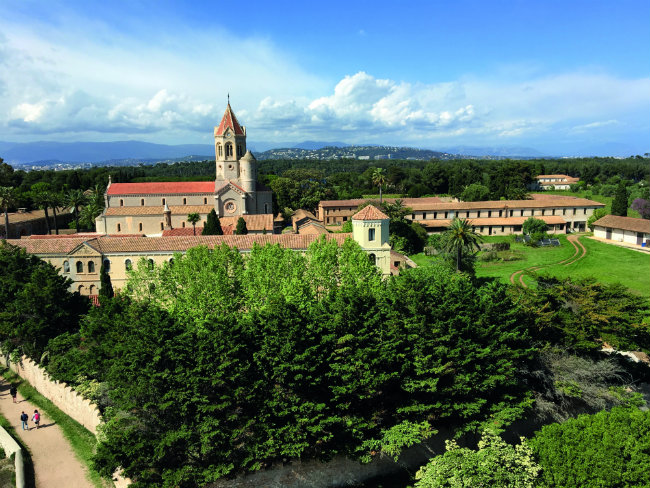
The monastery on Île Saint- Honorat. Photo: Jennifer Ladonne
BEAUTIFUL VALLEYS
If you remember Grace Kelly and Cary Grant’s nail-biting drive along the vertical cliffs above Monaco in To Catch a Thief, you’ll have some idea of just how quickly the Mediterranean coastline changes from beaches to mountains, especially behind Menton at the Italian border.
The peerless Parc National du Mercantour stretches for 150 kilometres and encompasses snowy mountains, lakes and seven valleys. More than half the park is an uninhabited and strictly protected nature reserve accessible to hikers only. Among its most beautiful valleys, the Vallée des Merveilles is known for its abundant wildlife, more than 2,000 types of wild-flowers – including the elusive edelweiss – and thousands of prehistoric carvings for you to discover along the way.
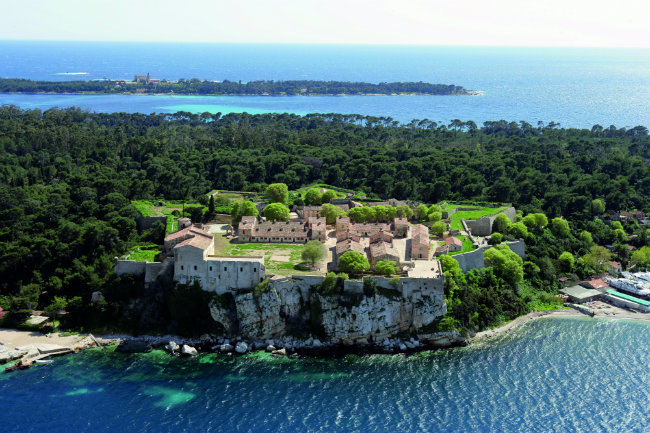
The fort on Île Sainte-Marguerite. Photo: KELAGOPIAN
This is prime hiking country and there are routes for every level but you will need to do your homework before you go. Any Alpes-Maritimes tourist office can supply maps of the region, but if you’re not a seasoned hiker, or if you’d like the work done for you, we would recommend a tour company like On Foot Holidays, who will provide maps and hotel stays in the principal villages, as well as luggage transport between stops.
If you’re not a walker, or you’re short on time, driving gives you the most freedom, as long as navigating steep, winding roads along vertiginous cliffs doesn’t faze you… (If you’re renting a car, consider spending a little extra for an automatic transmission, otherwise you’ll get a manual by default, which can get hairy if you’re not used to it).
Day-trippers can take the aptly-named Train des Merveilles, a thrilling railway ride that goes either straight to or near one historic village and then another with gorgeous landscapes extending from Nice to Tende, at the edge of the Alpes-Maritimes border and on into Italy. You can hop on and off the train as you please, and you may want to arrange lodging so you can spend some time really exploring the villages – most have either Historic Monument or Plus Beaux Villages de France status – to get the most out of your visit. Among the best villages to visit are Peillon-Sainte-Thècle, Peille, Sospel, Saorge, La Brigue, Tende and Sainte-Agnès (farther on towards the coastline and not on the train route).
From France Today magazine

Alleyways in the old city of Antibes. Photo: D. Vincendeau
Share to: Facebook Twitter LinkedIn Email
Leave a reply
Your email address will not be published. Required fields are marked *

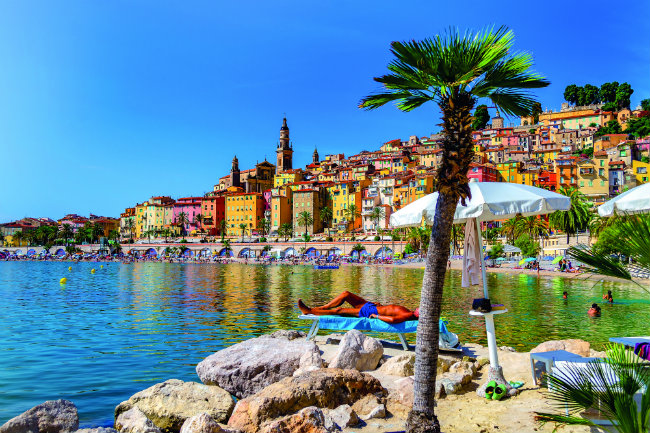




REPLY